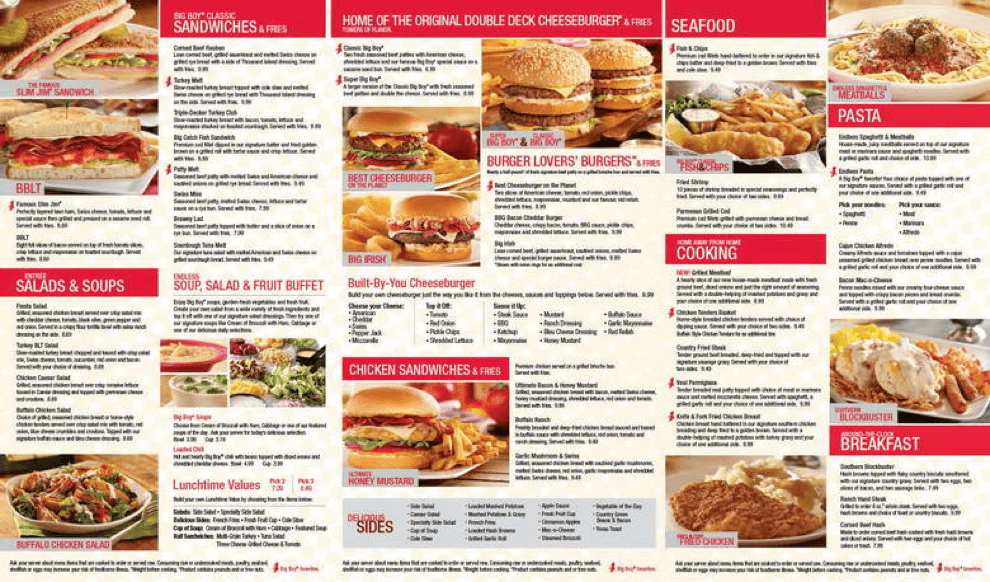Dynamic Messaging: The Future of CRO
If you’re leveraging tools on your website to boost your CRO, you may be in a similar boat to your competitors, meaning:
- You’re unable to personalize to the individual user.
- You can’t extract actionable data from your messages.
User demands are changing. A CRO-only focus on your website just won’t cut it anymore. Consumers expect personalized communication. 71% of customers express some level of frustration when their online experience isn’t personal enough.
So how do you make your personalization dynamic, relevant, and actionable?
Increasing conversions today is about getting to know your customers’ buying behavior on a deeper level, and updating your website in line with their psychology.
Enter: Dynamic messages.
Dynamic messages update your on-site communication in real-time. They effectively leverage psychological marketing techniques to optimize the messages you show to your users.
Dynamic messages are the key to a more refined CRO. But more than this, they go above and beyond by making personalization dynamic.
What makes dynamic messages “dynamic”?
Dynamic messages are “dynamic” because they auto-optimize based on the data of the customer. In other words, they use AI to test messages in line with user behavior and then choose the right message most likely to resonate with the individual.
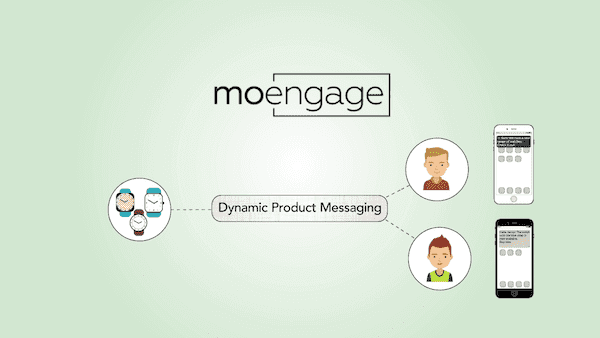
The messages that are shown to the user are most likely to:
- Influence their choice.
- Nudge them through to checkout (or to complete their purchase).
- Give them more information most likely to drive their click-behavior.
A/B testing may have worked for you in the past, but dynamic messages ensure customer journey personalization at scale by leveraging AI.
Many dynamic messages are built on theories found in psychology and behavioral economics. When done well, they not only increase metrics like CTR and CR. But they also make the customer journey seamless by helping users make better decisions.
In short, dynamic messages:
- Auto-optimize based on the individual user.
- Leverage psychological principles in their copy or design.
- Are placed at the right place at the right time to drive user behavior.
Here are seven very different dynamic messaging examples that leverage consumer psychology so you have an idea of how they work and how to leverage this strategy yourself.
7 Dynamic Messaging Examples that Leverage Psychology
-
Dynamic Badges on the PLP to decrease Choice Overload
Choice Overload is the psychological theory that explains why people undergo stress and anxiety when faced with too many options. Imagine a menu with endless choices of pizza, seafood, and burgers. Or a webshop that offers an endless scroll of all kinds of products.
In fact, most restaurants or online shops will try to reduce choice overload, which is why you don’t see endless menus or scrolls very often. That’s because, subconsciously, we prefer things that help us make decisions rather than giving us too many things to choose from.
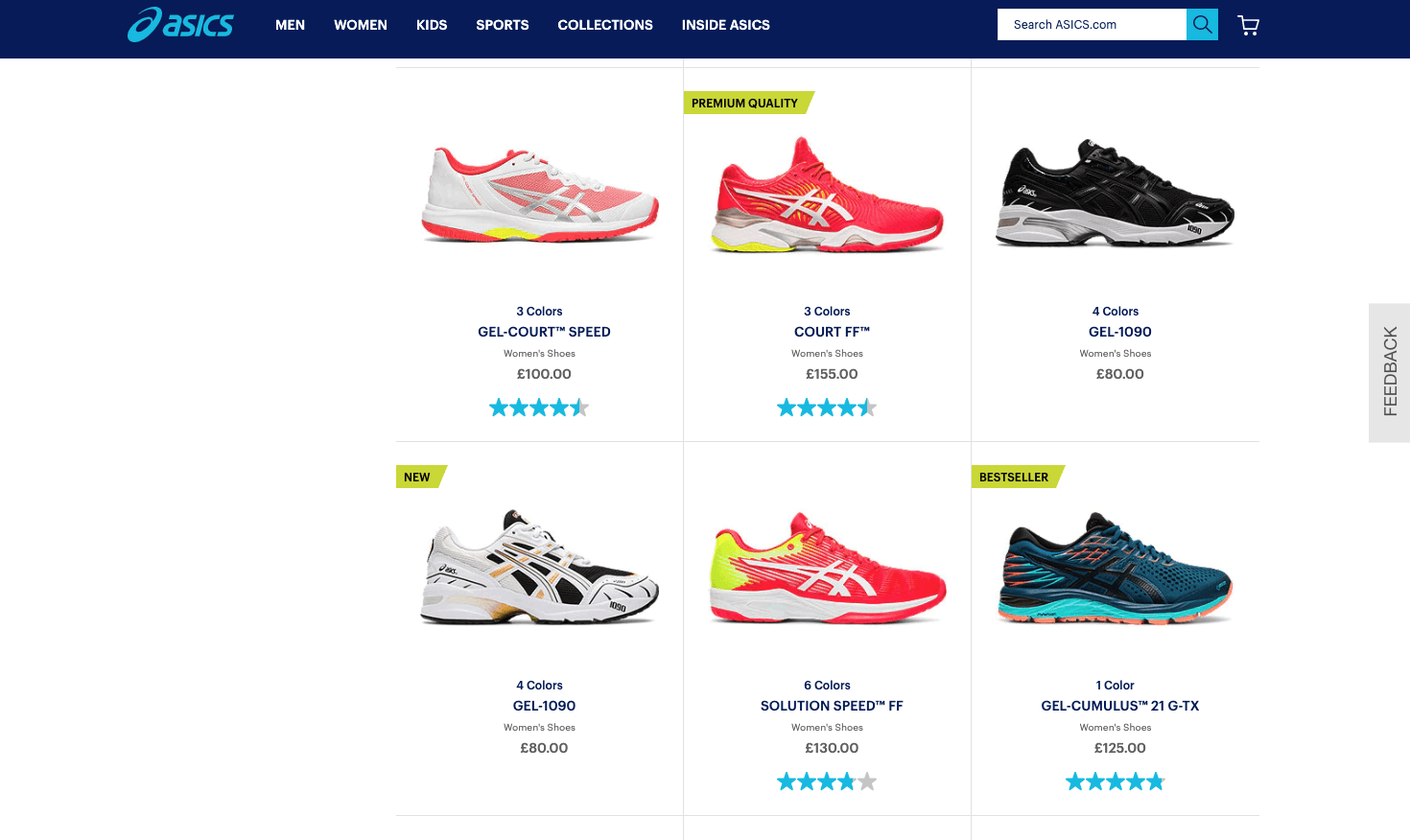
Product badges help draw attention to specific products. They highlight what’s special about a product like that it’s a bestseller, new, or is made with premium quality. On ASICS’ PLP, for example, they use badges to make certain shoes stand out.
Psychologically, choice overload will hurt your conversions. Product badges on the PLP are a great solution. An added bonus is that they will actually facilitate decision making, seeing increased CTR if a shopper clicks on products with a badge.
Product badges are also dynamic because they optimize based on click-behavior. Meaning, the AI shows the message most likely to drive behavior for the individual. Get this reporting right and it’s a win-win for both your customer and your online shop.
-
Dynamic pricing badges on the PLP for price sensitive shoppers

Dynamic pricing badges on the product lister page (PLP) that show a discount will appeal to your price-sensitive users. In order for these messages to resonate, however, you should test which customer segments click on discounted products in the first place. In eCommerce, this can be done by tracking in-session behavior on your web shop. For example,
- Who’s filtered your products from low-to-high price?
- Who’s used your discount codes at checkout?
- Who’s clicked on reduced items?
- Who navigates your product taxonomy by going to the SALE section?
Woocommerce has a simple dynamic pricing set-up. You can choose your own pricing rules so that every shopper gets personalized prices depending on their loyalty, customer journey path, or behavioral history.
Woocommerce also leverages Price Anchoring (crossing out the higher price and showing the lower one next to it). Psychologically, this is another great way to leverage Price Sensitivity messaging on-site.
If you want to set up dynamic pricing, be sure to ground your experiments in psychological theory. This will ensure you’re driving the right kind of behavior without your messages feeling intrusive or manipulative.
Leverage this yourself by tracking competitive product prices and analyzing which target consumer bases react to offers or discounts, whether you’re selling a solution or product.
-
Dynamic product USPs on the PDP to meet shopper information needs
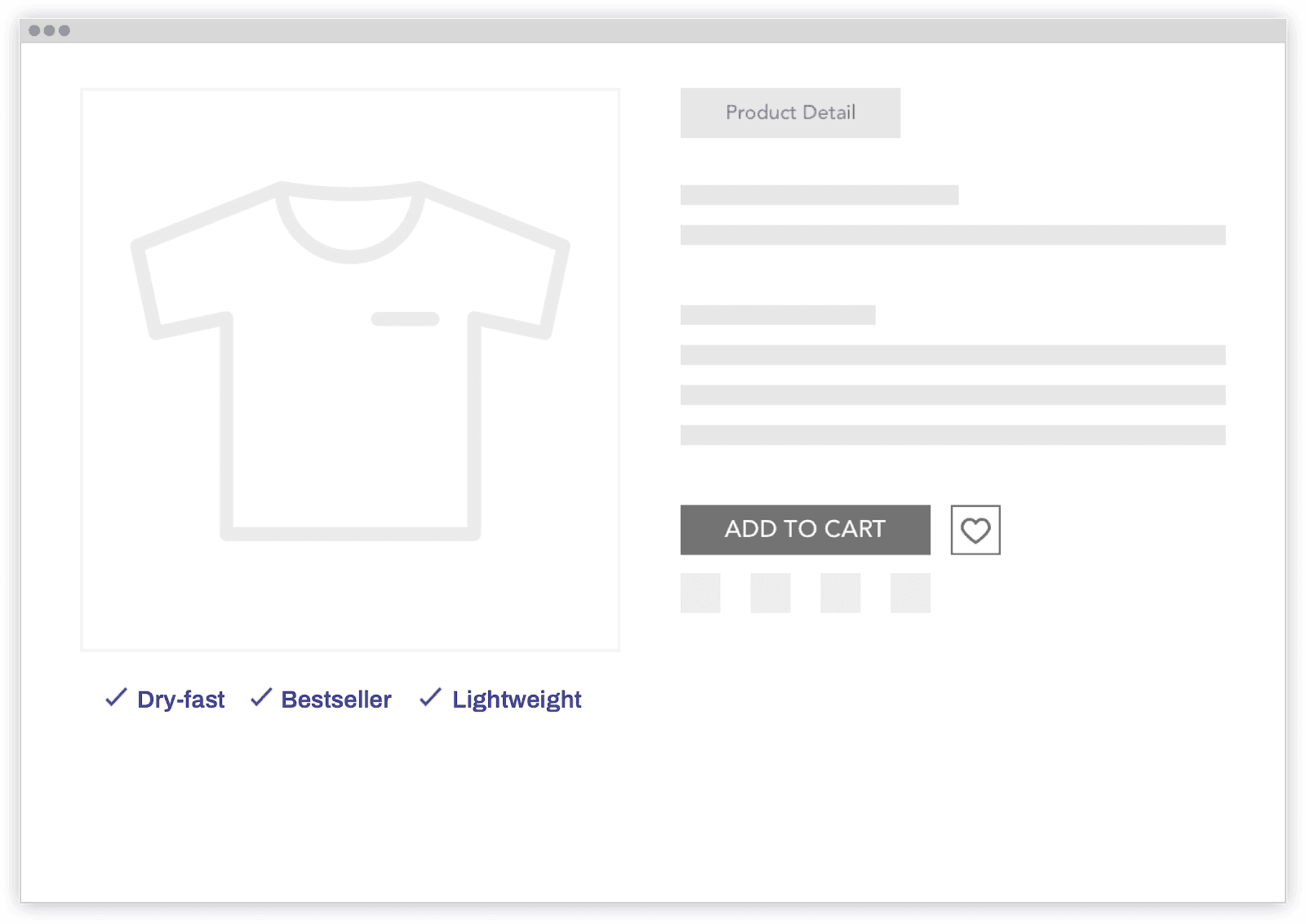 Crobox’s Dynamic Messaging
Crobox’s Dynamic MessagingOn the product detail page (PDP), users are information-driven. Meaning, they’re at the stage in their decision-making process where they’re looking for information about a product.
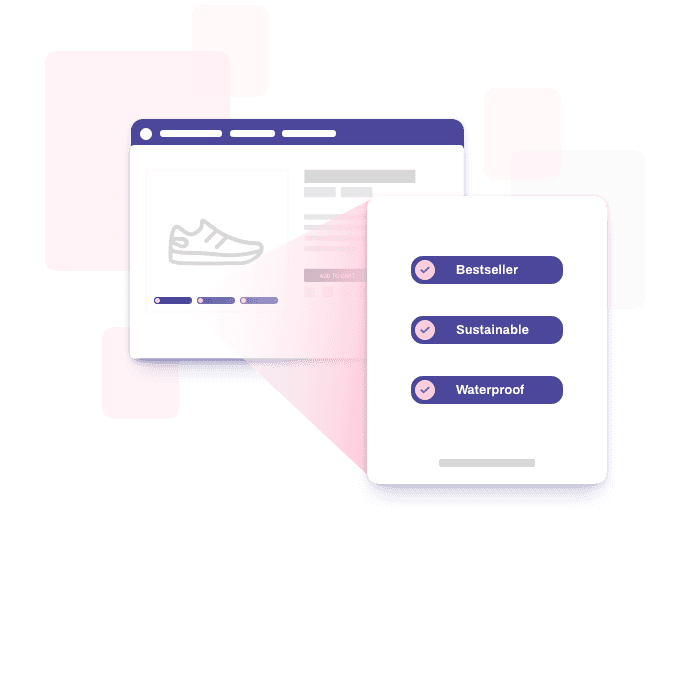
Dynamic product USPs on the PDP display the attributes of a product. By showing what’s special about a product in the form of product badges or notifications, you can aid your shoppers’ decision-making.
However, every product will have many attributes, and every individual has many reasons to buy a product.
It’s important you make these USPs dynamic by testing and predicting which messages appeal to which customers. For example, Crobox’s AI tracks behavioral data to show USPs most likely to resonate with the individual.
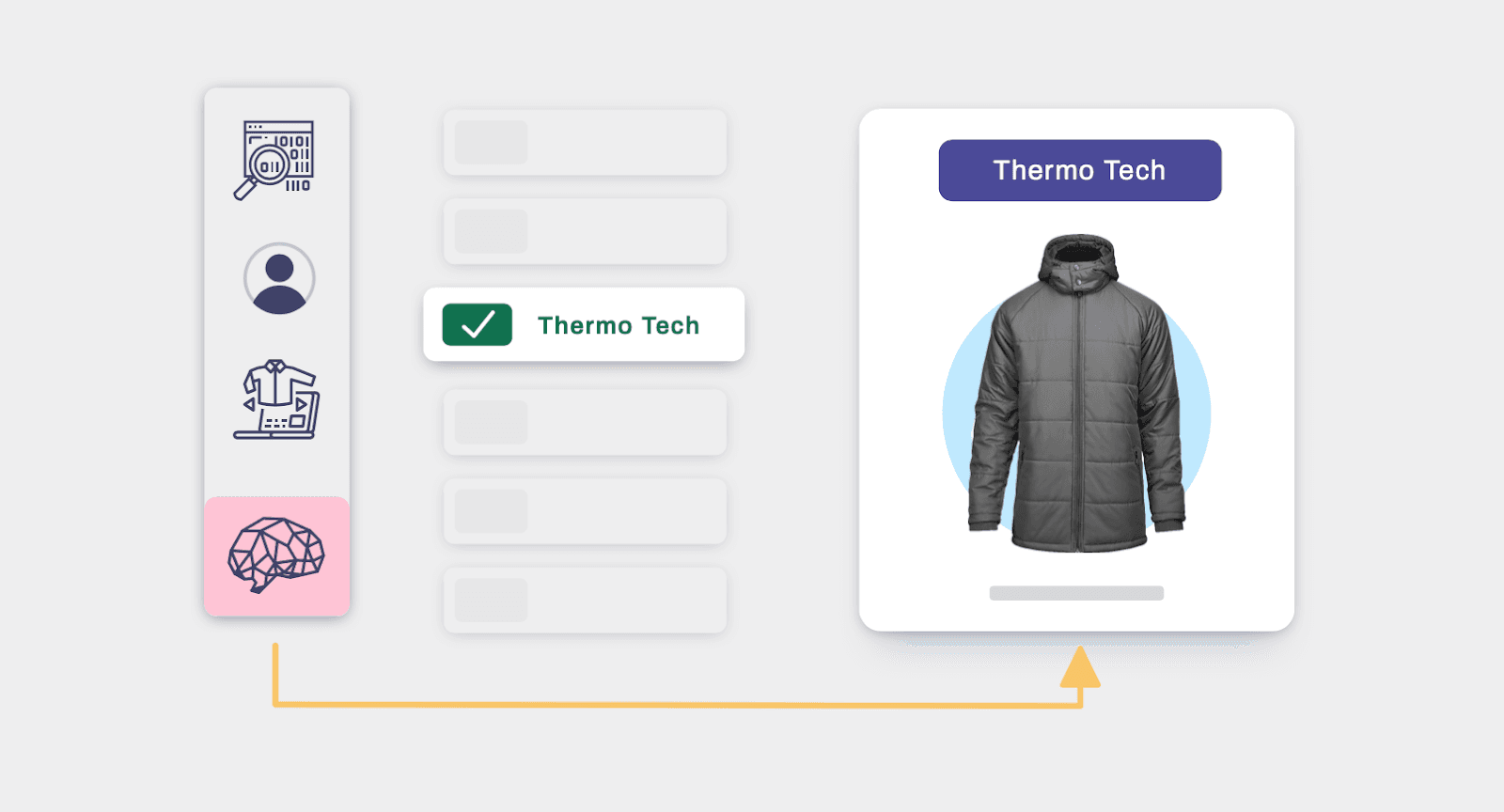 Crobox AI chooses the best message to show to the individual shopper.
Crobox AI chooses the best message to show to the individual shopper.In this way, our Dynamic Messaging ensures communication that resonates with each shopper. This not only reduces Choice Overload but facilitates decision-making when people are considering adding the product to their cart or checking out.
This allows retailers to scale their personalization by placing the right message on the right product at the right time. Understanding the attributes that drive behavior for your customers is also important to ramp up your SEO strategy and optimize your target keywords.
-
Dynamic product recommendations to guide shopper’s for the products they’re looking for
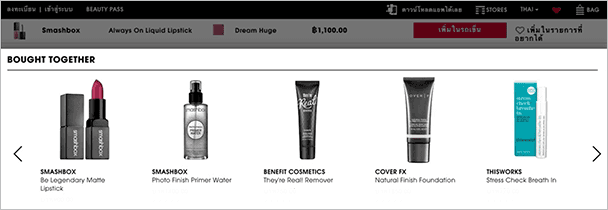
[Dynamic Yield] with Sephora(https://www.dynamicyield.com)
Everybody wants to feel complete. Product recommendations that leverage Set Completion appeals to this psychological driver by offering complementary products.
Product recommender engines learn from customer behavior and then optimizes accordingly. For example, they helped Sephora personalize their recommendations with three different recommender styles:
- “Bought together”
- “Similar products”
- “You may also like”
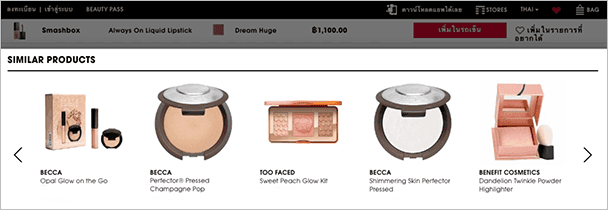
Additionally, you can also use product recommendations when search results come up empty. By populating a ‘no search result’ with recommendations, Sephora could use the recommender engine to drive shoppers back through the purchase funnel. Plus, they could show the most relevant products to the individual based on their previous browsing behavior.
By having different recommendation engine styles, you can test which ones work for which customer segments to personalize according to individual shopping goals.
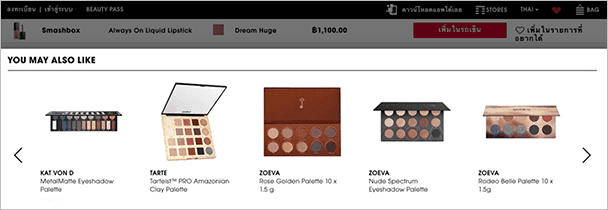
It’s the perfect example of where dynamic messages optimize the buyer’s journey, showing the right message at the right time. By tapping into people’s psychological tendency of Set Completion, Sephora can personalize the customer experience in line with shopping behavior.
You can also leverage this on your landing page, as an interactive overlay, or on your PDP page to cross or up-sell your products.
-
Dynamic notifications leveraging Scarcity
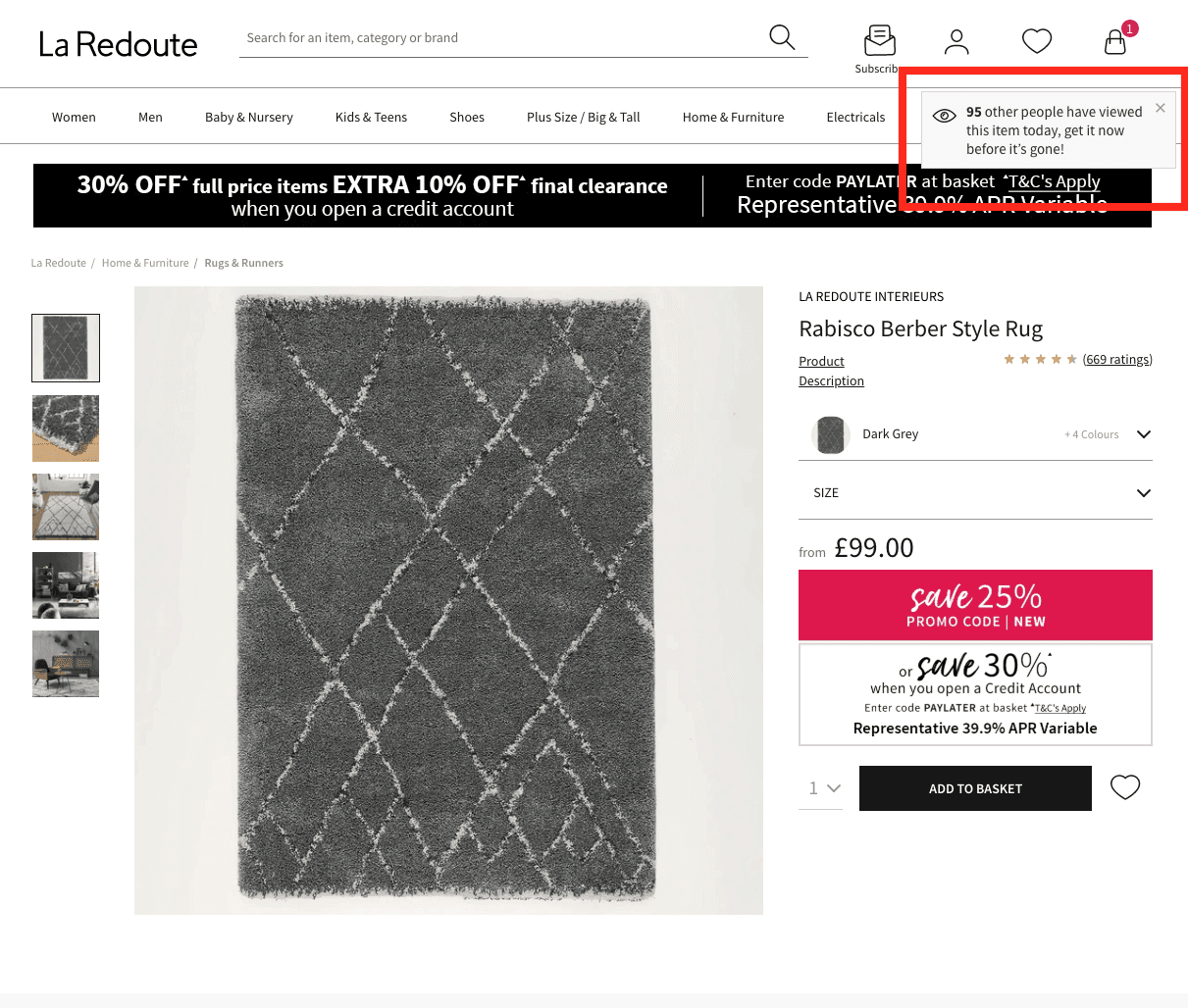
Dynamic notifications are tricky. Often, users experience ‘banner blindness’. Or, they get frustrated if these messages are intrusive or uninformative. For notifications to work, you need to** **strike a perfect balance between showing the right message, at the right time.
If I sound like a broken record, it’s only because this is the crux of a good dynamic messaging strategy: The right message, the right timing, and, of course, to the right individual.
La Redoute’s message may seem small. But, by leveraging Scarcity, it draws attention to the product it’s promoting. Things that are “Limited”, “Scarce”, or “Nearly Gone” will trigger Scarcity, as will messaging that shows exclusivity or rarity.
Smart notifications that are done well will help streamline decision making, but it’s important they leverage psychology in both a truthful and persuasive way.
-
Dynamic product content leveraging the Endowment Effect
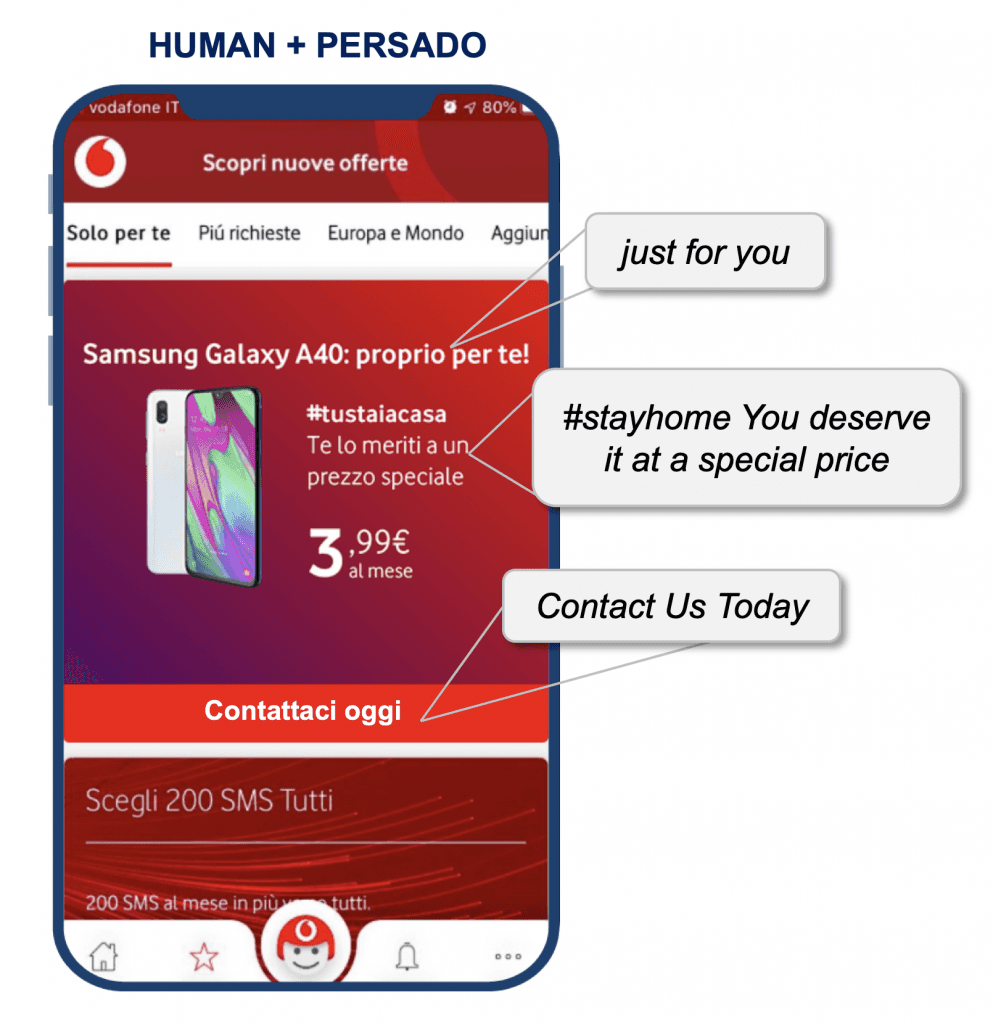
[Persado]’s dynamic content(https://www.persado.com/resource/vodafone-case-study)
Dynamic product content will test product descriptions or product messages against user behavior. The best performing message per individual will always be shown to that individual to make the content more appealing.
Persado tests different messages using machine learning and optimizes these messages based on the emotional profile of the user. For example, they optimized Vodafone Italy’s mobile content to win back mobile customers.
By testing different copy-variants with emotional psychology, they could show the right message that would most likely drive behavior for the mobile user.
The copy above also leverages the Endowment Effect, the psychological principle that refers to ownership and possession. This effect can be triggered simply by using the word “you”, which is what Vodafone does, e.g., “Just for you”, “You deserve it at a special price”.
You can also leverage the Endowment Effect by offering free trials or samples, try-ons, or by simply describing the product in use.
-
Dynamic pop-ups leveraging Social Proof

[Hubspot]’s dynamic pop-ups(https://www.hubspot.com/)
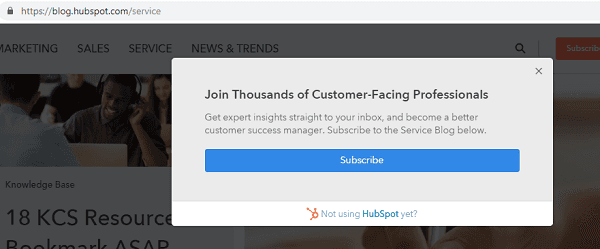
Social Proof is perhaps the psychological principle you’re most familiar with. It refers to the behavior where, when in doubt, people follow the actions of others. If you’re encouraging subscriptions in a pop-up, this is often the best place to leverage Social Proof.
But as with all our dynamic messages, Social Proof has many copy-variants you can test to see what message is right. Hubspot does this in a dynamic way. Meaning, they run continuous experiments with pop-ups that show different variants of Social Proof messaging, and auto-optimize based on which message is most likely to drive behavior.
By testing which pop-up generates the most clicks, subscriptions, including which gets clicked away, they can choose to show the most relevant pop-up to their customers. But this kind of information will also inform how they communicate across multiple channels.
For example, if they know that “48,000 fellow sales professionals” vs “thousands of customer-facing professionals” drive subscriptions, they can optimize their email marketing or webinar promotions with numbers leveraging Social Proof.
-
Dynamic ad messages leveraging Weather Effects
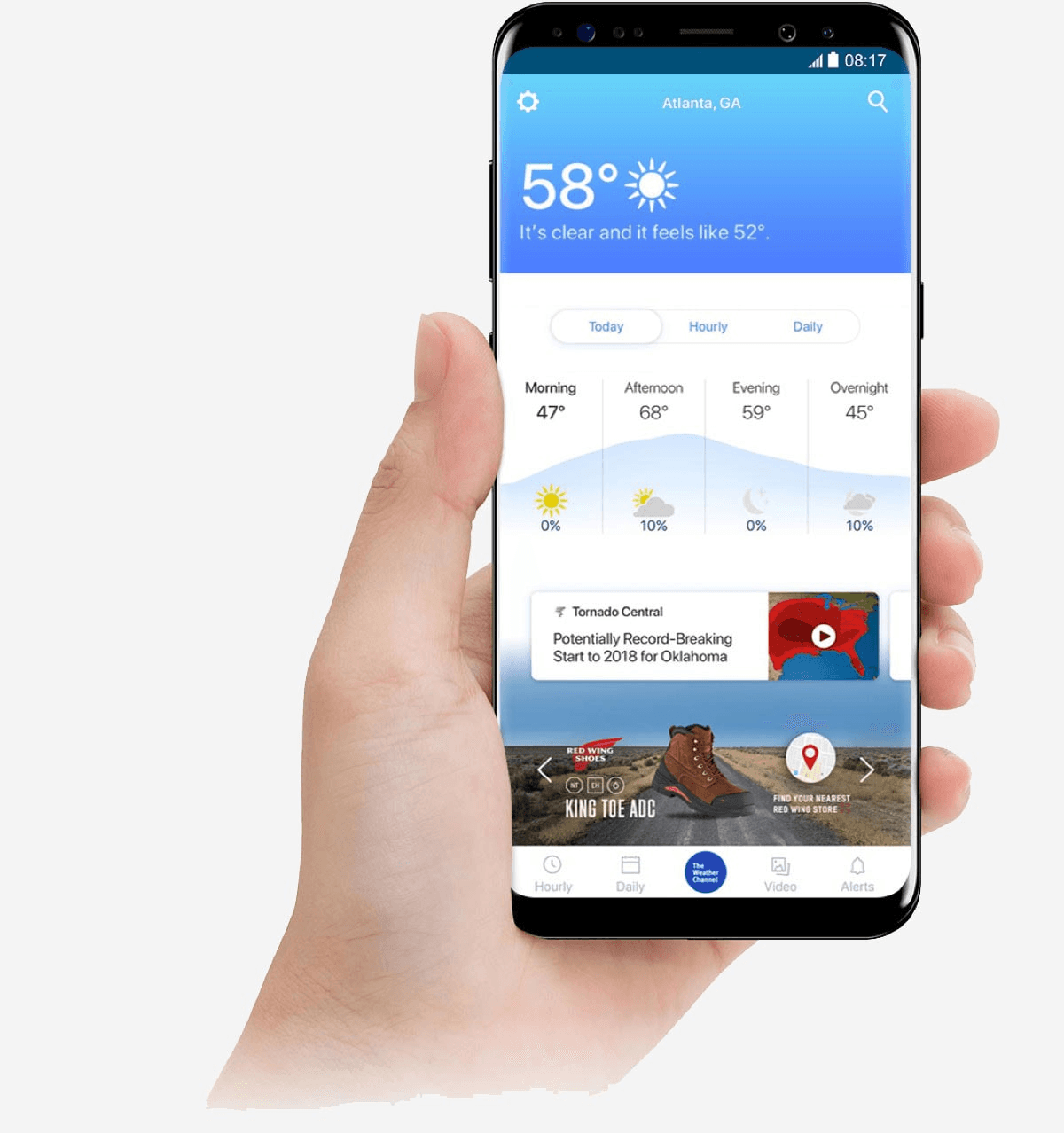
As we’ve seen throughout this article, dynamic messaging is about updating your communication in line with user behavior on your website. So what about advertisements? With increasing customer data protection, adverts have to take into account external factors instead of tracking cookies in a third-party context for personalization. One way of doing this is to test different creative approaches to messaging.
For example, IBM tested over six hundred creative permutations to help meet the needs of different audience segments. Their tactic applied Weather Effects, the psychological principle that suggests tailoring your marketing strategies to the current weather. For example, studies have found that on gloomy days, we feel more risk-averse, and on sunny days we feel more risk-seeking. IBM tested dynamic messages based on the weather to encourage people to download the Storm Radar weather app. Their AI learned and then predicted which creative elements would resonate with who, based on device type, weather, and time of day.
Conclusion
Static messages with the aim to increase CRO are out. Dynamic messages optimized based on your user’s behavior is the only way forward. Dynamic messages personalize your website communication in a way that is relevant to each visitor. With increasing demands for personalization at scale and websites fighting for user attention, dynamic messages can be your competitive advantage. But don’t forget - in order to really make the most of your messages, be sure to leverage psychology and extract actionable insights from the data generated by your on-site testing.
About the Author
Nikole Wintermeier - Invests in beer, basketball, and books. Big fan of alliteration and psychology. Currently works at Crobox.
Crobox tells retailers what their customers love about their products. By leveraging consumer psychology and AI, our Dynamic Messages personalize the way shoppers interact with products.

